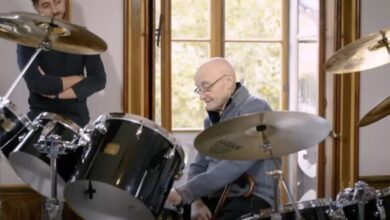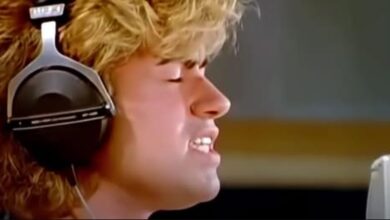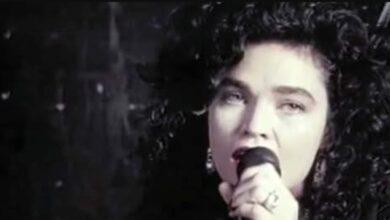a-ha delivered a stunningly heartfelt performance of “Take On Me.”
“Take On Me” by a-ha is a quintessential 1980s pop anthem known for its catchy melody, innovative music video, and the high-reaching falsetto of lead singer Morten Harket. Released in 1984 and later re-released in a more polished version in 1985, the song became a global hit, showcasing the Norwegian band’s unique blend of synth-pop and new wave music. The track is characterized by its memorable synthesizer riff, energetic tempo, and the seamless integration of electronic music with pop sensibilities.
The song’s music video was groundbreaking for its time, featuring a blend of live-action footage and pencil-sketch animation called rotoscoping. This innovative technique created a captivating narrative that told a love story transcending the boundaries between the real world and the animated world. The video was not only a massive success on MTV but also became iconic in the music industry for its creative approach to storytelling through music and visuals.
a-ha, consisting of Morten Harket, Magne Furuholmen (keyboardist), and Paul Waaktaar-Savoy (guitarist), formed in Oslo, Norway, in the early 1980s. “Take On Me” was one of their first singles and played a significant role in catapulting the band to international fame. Despite initial challenges in breaking into the music scene, the song’s eventual success established a-ha as a significant force in the 1980s music landscape.
Beyond its commercial success, “Take On Me” is often praised for its intricate composition and lyrical depth. The song speaks to themes of love, risk-taking, and the desire for connection, resonating with a wide audience and ensuring its place in the pantheon of timeless pop anthems. Its high energy and optimistic tone have made it a favorite for both radio play and various forms of media, from movies to commercials, cementing its status as a cultural touchstone.
Morten Harket’s vocal performance on “Take On Me” is particularly noteworthy, with his wide vocal range and distinctive falsetto becoming a defining feature of a-ha’s sound. The band’s ability to merge this vocal prowess with synth-driven pop music distinguished them from other acts of the era and contributed to the song’s enduring appeal.
Despite the massive success of “Take On Me,” a-ha was determined not to be defined by a single hit. The band continued to produce music, exploring various styles and themes throughout their career. Their subsequent albums and singles, while perhaps not reaching the same commercial heights as “Take On Me,” have been praised for their artistry and innovation.
a-ha’s influence extends beyond their music. They have been recognized for their contribution to the development of music videos as an art form. The band’s dedication to their craft and their willingness to experiment with new sounds and technologies have earned them a respected place in music history.
Today, “Take On Me” remains a beloved track, often featured in retrospectives of 1980s music. Its continued popularity is a testament to its quality and the emotional connection it establishes with listeners. For many, the song is not only a nostalgic reminder of the 1980s but also a celebration of the enduring power of well-crafted pop music. As for a-ha, the band’s legacy is characterized by their innovative approach to music and video production, leaving an indelible mark on the industry that resonates to this day.





